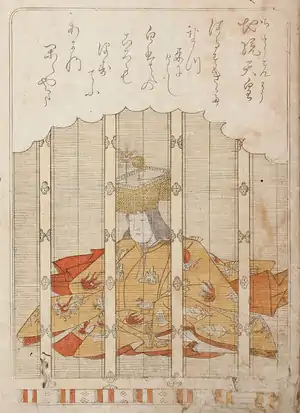703
Year 703 (DCCIII) was a common year starting on Monday (link will display the full calendar) of the Julian calendar. The denomination 703 for this year has been used since the early medieval period, when the Anno Domini calendar era became the prevalent method in Europe for naming years.
| Millennium: | 1st millennium |
|---|---|
| Centuries: | |
| Decades: | |
| Years: |
| 703 by topic |
|---|
| Leaders |
|
| Categories |
|
| Gregorian calendar | 703 DCCIII |
| Ab urbe condita | 1456 |
| Armenian calendar | 152 ԹՎ ՃԾԲ |
| Assyrian calendar | 5453 |
| Balinese saka calendar | 624–625 |
| Bengali calendar | 110 |
| Berber calendar | 1653 |
| Buddhist calendar | 1247 |
| Burmese calendar | 65 |
| Byzantine calendar | 6211–6212 |
| Chinese calendar | 壬寅年 (Water Tiger) 3399 or 3339 — to — 癸卯年 (Water Rabbit) 3400 or 3340 |
| Coptic calendar | 419–420 |
| Discordian calendar | 1869 |
| Ethiopian calendar | 695–696 |
| Hebrew calendar | 4463–4464 |
| Hindu calendars | |
| - Vikram Samvat | 759–760 |
| - Shaka Samvat | 624–625 |
| - Kali Yuga | 3803–3804 |
| Holocene calendar | 10703 |
| Iranian calendar | 81–82 |
| Islamic calendar | 83–84 |
| Japanese calendar | Taihō 3 (大宝3年) |
| Javanese calendar | 595–596 |
| Julian calendar | 703 DCCIII |
| Korean calendar | 3036 |
| Minguo calendar | 1209 before ROC 民前1209年 |
| Nanakshahi calendar | −765 |
| Seleucid era | 1014/1015 AG |
| Thai solar calendar | 1245–1246 |
| Tibetan calendar | 阳水虎年 (male Water-Tiger) 829 or 448 or −324 — to — 阴水兔年 (female Water-Rabbit) 830 or 449 or −323 |

Empress Jitō of Japan (645–703)
Events
Byzantine Empire
- Arab–Byzantine War: The Umayyad army under Abdallah ibn Abd al-Malik captures Mopsuestia in Cilicia from the Byzantines, and refortifies it, making it the first major Muslim stronghold in the area that will later become the Thughur.[1][2]
- Musa ibn Nusayr, governor of Ifriqiya (western Libya), builds a Muslim fleet to harass the Byzantine navy and conquer the islands of Ibiza, Majorca, and Menorca (approximate date).
Europe
- Faroald II, duke of Spoleto, attacks the Exarchate of Ravenna in Italy, after the death of his father Thrasimund I. King Aripert II of the Lombards, desiring good relations with the Byzantine Empire and papacy, refuses to assist him.
Britain
- High King Loingsech mac Óengusso and his forces are routed during an invasion of Connacht (Ireland). He is killed by the men of King Cellach mac Rogallaig (approximate date).
Births
- An Lushan, Chinese rebel leader (approximate date)
- Shi Siming, general of the Tang Dynasty (d. 761)
Deaths
References
- Treadgold, Warren T. (1997), A History of the Byzantine State and Society, Stanford, CA: Stanford University Press, pp. 337–339, ISBN 0-8047-2630-2
- Venning, Timothy, ed. (2006). A Chronology of the Byzantine Empire. Palgrave Macmillan. p. 189. ISBN 1-4039-1774-4.
- Levison England and the Continent pp. 50–51
This article is issued from Wikipedia. The text is licensed under Creative Commons - Attribution - Sharealike. Additional terms may apply for the media files.